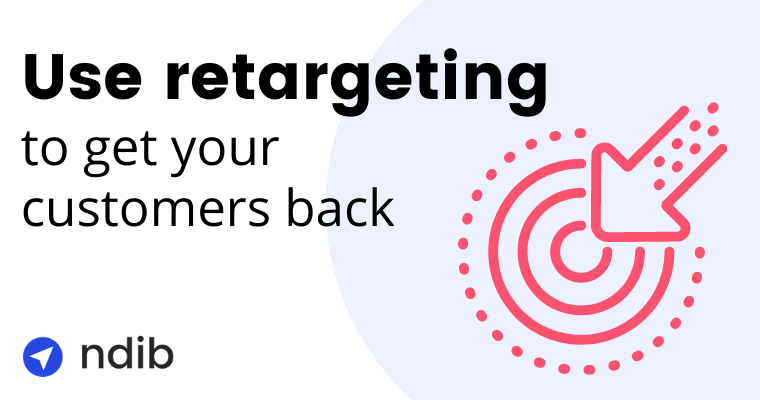Why do people even click on your ads?
That’s the question you wonder as you watch your ad spend continue to rise, while your sales remain stagnant.
Users click on your ad, visit your page and leave without purchasing….. never to return.
It is like the visitor saw what you had to offer and swiped left…

So what do you do?
You try redesigning your web page in an attempt to get visitors to convert.
This costs time and money – the two things your business never has enough of.
When you relaunch with your redesigned page, the page is new but results are the same.
Internet advertising may work for some businesses, but not yours.
The truth is, it can work for your business and the poor results are not your fault.
It wouldn’t matter what changes you made to your website – because it isn’t about your site.
It is about how people behave on the Internet.
So grab a cup of coffee and get ready – it is time to learn what prevents your campaigns from becoming profitable and how to fix it….
People Don't Buy on the First Visit
A person searches for your business, clicks on your ad and scans your page.
They consider submitting your form or buying your product.
Then the phone rings, or they decide to check facebook, or their boss comes by and they have to close the screen.
Or a million other distractions.
These distractions cause the visitor to leave your page and you to lose the sale.

Lack Of Sales Now Does Not Mean Lack Of Sales In The Future
The Solution: Retarget The Visitor Until They Become A Customer

The way retargeting works is a site drops a cookie in the site visitor’s browser.
This cookie tells the network (usually Google or facebook) to follow the visitor around the Internet with ads you specify.
Why Retargeting Ads are Effective
A. You do not lose the sale after the prospect leaves your page.
Anyone who comes to your site is too valuable to let go.
These are prospects who know and like you, and you want to stay in front of them with your business’s value proposition.
Retargeting ads follow potential customers around wherever they go online This keeps your company top of mind without the prospect ever having to perform their search again.
B. Retargeting ads are tailored to the individual person.
For example, if a person visits an eCommerce site, and leaves without making a purchase they can receive ads based on the products they view.
They could be shown women’s shoes ads if they visited the women’s shoes page. They can also be shown women’s coats ads if they visited the women’s coats page.
As a real world example, when a user views the product All Star Lugged Boots on the converse site this is the retargeting they see ads for that specific product:

whereas when they view the Slip Shoe product page this is the retargeting ad they see:

C. You can start or stop the retargeting to specific users based on your business needs
If a user clicks on the retargeting ad and converts you can stop showing the ad to them.
A use case for this would be a lead generation business such as a insurance company.
Once a prospect submits the form and gets their quote you stop showing them the ads. Continuing to have your ad follow them around only annoys them and wastes your money since they have already performed the desired action.
As an example, this ad retargets site visitors who have not yet submitted the form to get a quote.

Once the retargeting ad works, and the user submits the form they are removed from that retargeting audience. This means they no longer see this retargeting ad.
C. Retargeting is cheaper than typical ads.
Studies show that retargeting ads cost about only 50% of the cost per click of traditional search ads
D. Retargeting ads convert at a higher rate.
I have read case studies that report that retargeting raises conversion rates by as much as 300% (though that is a Google published case study, and their numbers are obviously intended to try to convince you to advertise with Google). In my experience the conversion rate increase isn’t quite that high – but it is very profitable ![]()
How to Use Retargeting to Get Your Customers Back
1. Create a Strategy
Before you start with a single line of code, start with your strategy.
You want to answer some basic strategic business questions such as:
A. What are you attempting to accomplish with your retargeting campaign?
Do you want to have ads that target users based on the specific items they view or will the ads be more general?
As an example this is Macy’s retargeting users who have seen a specific item (gshock watches):

Whereas this example is a more general retargeting ad intended to keep the brand Macy’s top of mind.

B. Will you present the user an offer?
For example, you could target users who put an item in their shopping cart, but don’t complete the sale. These users can receive a retargeting ad with a 10% off coupon. This will entice them to come back to complete the sale.
Here is an example of Cole Haan using that strategy. A potential customer put the shoes in their shopping cart, but didn’t complete the sale. Cole Haan then retargets them with these ads for 40% off to get them back to the site:

C. What networks do you plan to retarget on?
facebook, Google, twitter all have unique features that can help, or hurt your bottom line.
D. Do you plan to target both desktop and mobile users?
Users exhibit different purchasing behaviors depending on the device. You will want to match the intended behavior with your retargeting ad.
As an example (again from Geico – what can I say? They spend a lot on ads!) the ad below only appears on mobile so the call to action is to make a phone call:

Side note – how could you not call someone named Mensch?
2. Drop the Cookie

3. Create the Campaigns
Create the campaigns based on the strategy you crafted in the first step.
For example, let’s say you have two campaigns. One campaign targets users who visited your site and left, the other targets users who put an item into your online shopping cart and abandoned it.
You would want different ads and a different budget for each campaign.
4. Optimize
Keep track of how your campaigns are performing, and make changes to them based on the data that you receive.
Remember, Internet Advertising is not a set it and forget it form of marketing.
Even the best advertisers don’t start with perfect campaigns. These profitable advertisers carefully track their results. They then change the campaigns based on data – you should as well.
Remember, to optimize for your North Star metric which is always profit. Any other metric (clicks, impressions, etc) is vanity.
Your Turn!
Now you know why users were not purchasing from your site. You also know how to continue to target them until they have the time, desire, and attention to make the purchase.
Try out retargeting and put in the comments how it works for you!
How do you get customers back who have left your site without converting?
Image Credits:



